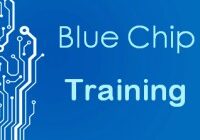| Understand Java EE Architecture |
– Describe Java EE 7 standards, containers, APIs, and services
– Differentiate between application component functionalities as they apply to different tiers and containers, including Java EE Web Container, Business Logic implementation and WebServices
– Create, package and deploy Java EE application
– Demonstrate understanding of Enterprise JavaBeans and CDI beans, their lifecycle and memory scopes
– Demonstrate understanding of the relationship between bean components, annotations, injections, and JNDI |
| Manage Persistence using JPA Entities and BeanValidation |
– Create JPA Entity and Relationship Object-Relational Mappings (ORM)
– Use Entity Manager to perform database operations, transactions and locking with JPA entities
– Handle entity data with conversions, validations, and key generation
– Create and execute JPQL statements |
| Implement Business Logic by Using EJBs |
– Create session EJB components containing synchronous and asynchronous business methods, manage the life cycle container callbacks and use interceptors
– Demonstrate understanding of how to control EJB transactions, distinguish Container Managed (CMT) and Bean Managed (BMT) transactions
– Create EJB timers |
| Use Java Message Service API |
– Describe the Java Message Service (JMS) messaging models and implement Java SE and Java EE message producers and consumers, including Message-Driven beans
– Use transactions with JMS API |
| Implement SOAP Services by Using JAX-WS and JAXB APIs |
– Create SOAP Web Services and Clients using JAX-WS API
– Define Java to XML Schema mappings to marshall and unmarshall Java Objects by using JAXB API |
| Create Java Web Applications using Servlets |
– Create Java Servlets, describe how they are mapped to urls and use HTTP methods
– Handle HTTP headers, parameters, cookies
– Manage servlet life cycle with container callback methods and WebFilters |
| Create Java Web Applications using JSPs |
– Describe JSP life cycle
– Describe JSP syntax, use tag libraries and Expression Language (EL)
– Handle errors using Servlets and Java Server Pages |
| Implement REST Services using JAX-RS API |
– Understand and Apply REST service conventions
– Create REST Services and clients using JAX-RS API |
| Create Java Applications using WebSockets |
– Understand and utilise WebSockets communication style and lifecycle
– Create WebSocket Server and Client Endpoint Handlers using JSR 356 API and JavaScript
– Produce and consume, encode and decode WebSocket messages |
| Develop Web Applications using JSFs |
– Describe JSF arcitecture, lifecycle and navigation
– Understand JSF syntax and use JSF Tag Libraries
– Handle localisation and produce messages
– Use Expression Language (EL) and interact with CDI beans |
| Secure Java EE 7 Applications |
– Describe Java EE declarative and programmatic security and configure authentication using application roles and security constraints and Login Modules
– Describe WebServices security standards |
| Use CDI Beans |
– Create CDI Bean Qualifiers, Producers, Disposers, Interceptors, Events and Stereotypes |
| Use Concurrency API in Java EE 7 Applications |
– Demonstrate understanding of Java Concurrency Utilities and use Managed Executors |
| Use Batch API in Java EE 7 Applications |
– Describe batch jobs using JSL XML documents and JSR 352 API |

